TL;DR
Upselling is the practice of encouraging customers to choose a higher-value version of the product or service they’re already considering, for example, a larger size, a premium tier, or an upgraded plan.
Most effective upselling methods:
1. Post-Purchase Email Upsells – Follow up after checkout with smart, value-driven emails that suggest add-ons or upgrades.
2. Free Shipping Threshold – Motivate customers to increase their cart value by offering free shipping once they hit a certain spend level.
3. Post-Purchase Email Upsells – Follow up after checkout with smart, value-driven emails that suggest add-ons or upgrades.
If you’re not upselling to your customers, you’re missing out on a lot of revenue.
In Marketing Metrics, the authors say:
“The probability of selling to a new prospect is 5-20%. The probability of selling to an existing customer is 60-70%.”
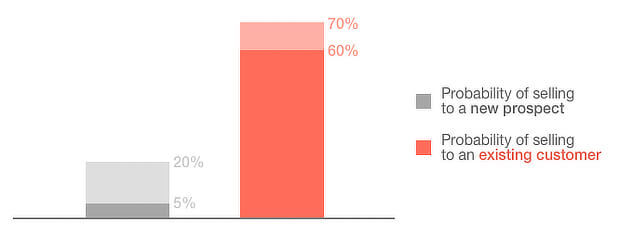
Source: Groove
And since product recommendations can drive 10-30% of revenue, putting the right upsell offers in front of people at the right time is an important sales growth tactic.
But what is upselling and how to do it? In this article, we explain everything!
What Is Upselling?
Upselling is suggesting a better or more expensive version of a product or service to a customer who is already interested in buying. The goal of upselling is to increase the overall value of the sale and generate more revenue for the business while also providing additional benefits or features to the customer.
For example, a fast food restaurant might offer to upgrade a customer’s meal to a larger size or add on additional menu items.
Effective upselling involves identifying relevant and valuable opportunities for the customer and positioning the offer as a solution to their needs or preferences.
Difference Between Upselling and Cross Selling
Before we get started with our upselling tips and examples, it’s important to understand the difference between upselling vs. cross-selling. Both are tactics used to boost sales revenue, but they work slightly differently.
Cross-selling is suggesting other relevant products people can try. What is an example of cross-selling? When you buy a cell phone online, and the online store suggests screen protectors for that model, that’s cross-selling.
Upselling is persuading the customer to upgrade their product or buy a more expensive version of it. How do you upsell? Let’s stick with the cellphone example. If you’re about to buy the model with 32GB of storage space, the online store can suggest you get the one with 64GB or 128GB.
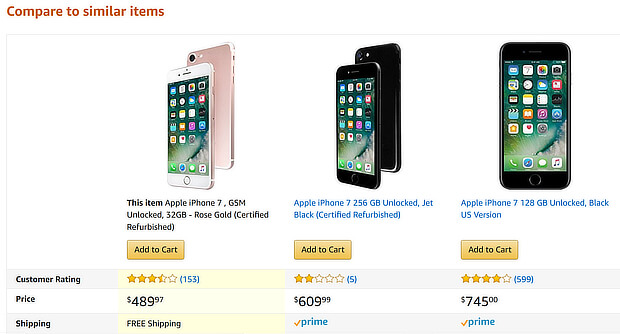
Here’s the great thing about upselling. It doesn’t just increase AOV; it also increases customer lifetime value. In other words, customers spend more while they remain customers. And that’s why it’s so important for your business.
How To Upsell: Effective Upselling Tips
More of a visual learner? No problem! Check out our top 5 upsell tips.
Otherwise, keep reading this in-depth guide!
1. Choose the RIGHT Upsell
When you look at eCommerce upsell examples, you’ll see there are several types you can offer.
The Version Upgrade
As we mentioned earlier, you can ask shoppers to get a different version of a product you’re offering. It can be bigger, stronger, faster, better – you get the idea.
Product Protection
Another favorite upsell, both online and offline, is the “protect your product” upsell, which asks you to extend your warranty so you effectively guard your product against something going wrong. For example, if you buy a phone, you can often get a screen replacement warranty.

Customization
You know those “customize your product” features you get on some sites? Well, that’s a series of upsells, because every customization you add increases the price.
Extended Service Period
Sometimes, instead of a physical product, you can upsell by offering better value for a longer contract. And you can also offer better deals for early renewals. This works well for SaaS products.
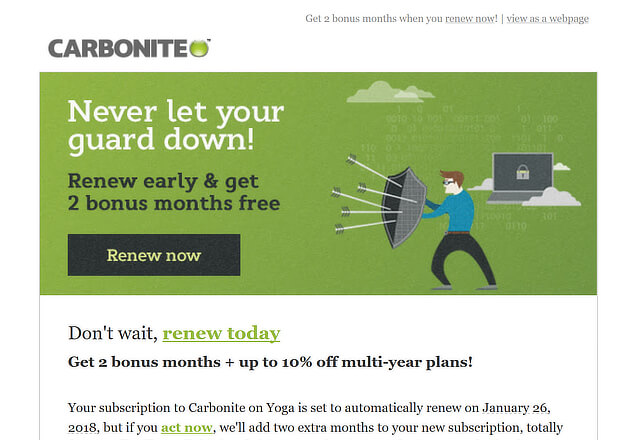
The Bundle
Bundling is a bit of a grey area because it’s both cross-selling and upselling, but if you package related items together and show that it’s better value, you can definitely increase your sales of all the items in the bundle.
2. Always Offer the Upsell
The more upsell opportunities you show customers, the more chances they have to take one. So offer your upsell everywhere it makes sense. Some typical locations for upsells include:
- On product pages, where you have multiple chances to show off product versions
- When people add items to the cart, as it’s a great time to show supplementary products or services that help them get more value from what they’re already planning to buy
- When the customer reaches a success milestone. For example, in Asana, when you’ve added a few tasks, you’ll get an email showing you how to manage tasks even better with their premium product.
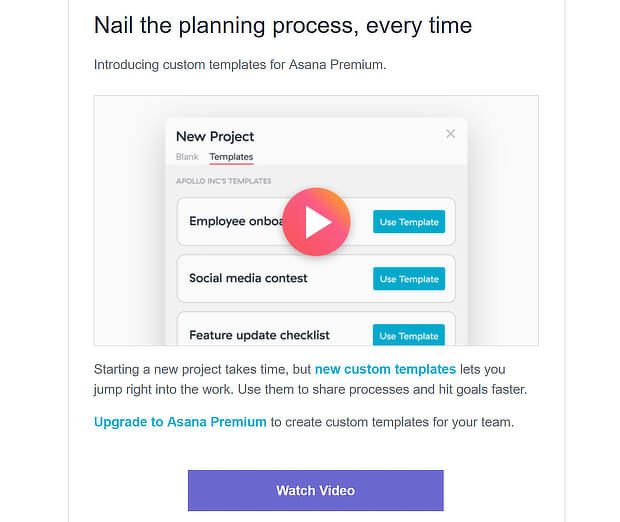
3. But Don’t Be Pushy
Even though you want customers to see your upsells, you don’t want to annoy them. Show your upsell popup at the wrong time, and they may not buy anything at all. Show it at the right time, and you’ve got a much better chance of making a better sale.
Some online retailers handle this by placing the upsell information well below the product information, so only people who are really interested ever see it.
Another option is to show your upsell when people have made the decision to buy. For example, if you show it once they’ve added an item to the cart (but before they checkout) that can be a great time to get an additional sale.
There’s no point in showing your upsell when people have just landed on the page because that could annoy them enough to leave. Instead, use OptinMonster’s scroll trigger to wait till they’ve scrolled a certain distance so you know they’re interested.
Follow our instructions for creating your first campaign, then go to Display Rules » Who should see the campaign? Choose Visitors to a particular page and add the URL of the product or add to cart page.
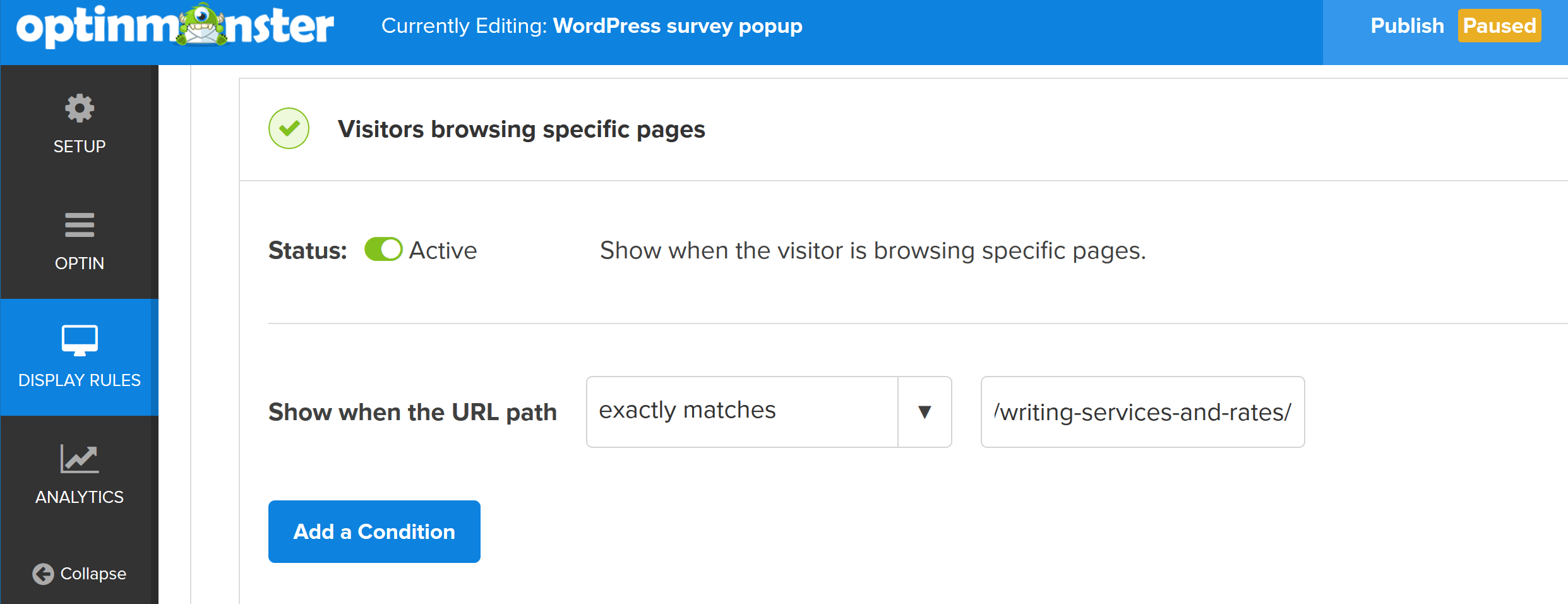
Then, go to Display Rules – When should the campaign appear? and select After scrolling down ‘X’ amount. Set the percentage to around 70% so you’ll know it shows when people have seen most of the page.
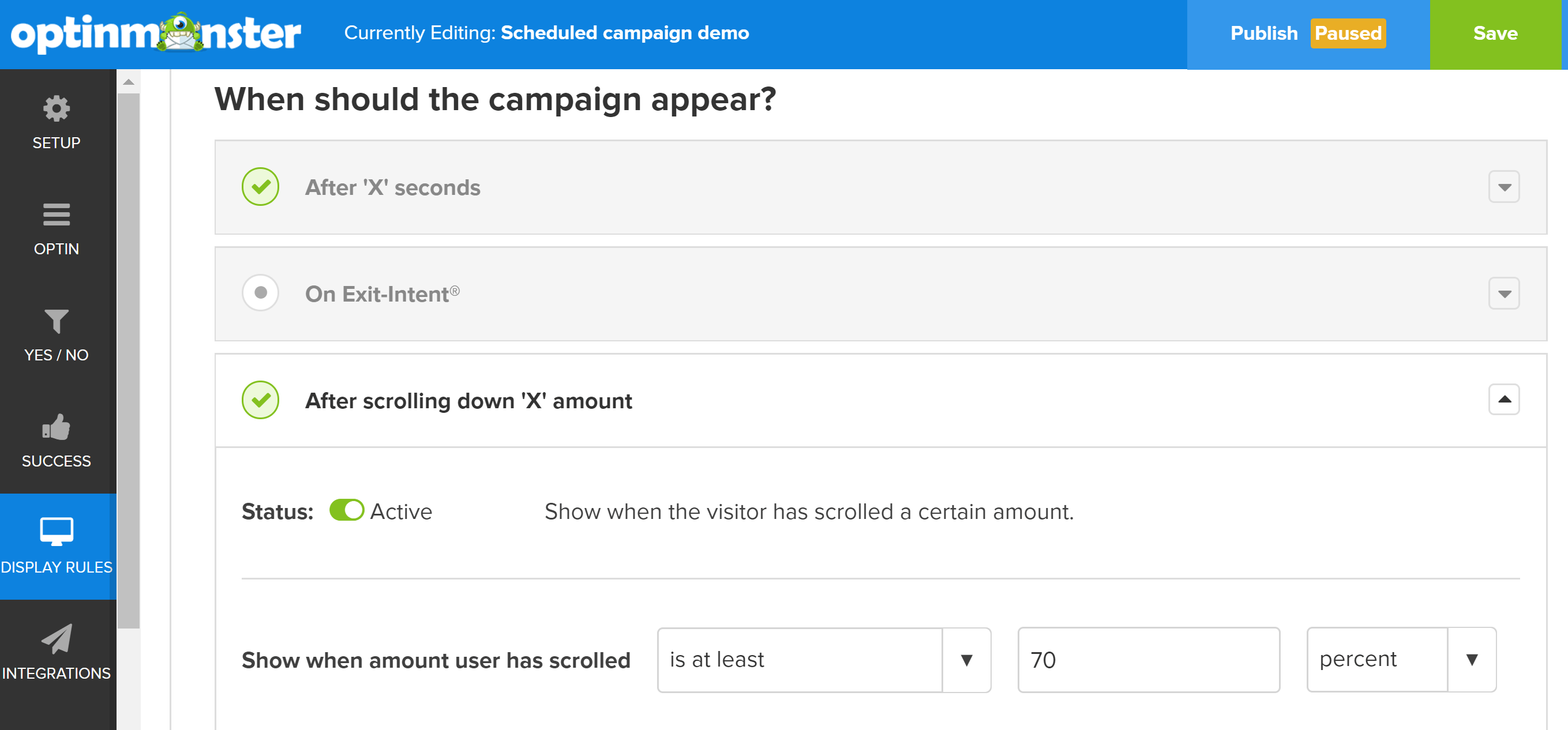
4. Make Your Upsell Relevant
Relevance is key when deciding on your upsell. If someone’s buying a book on marketing, there’s no point in recommending a book on childcare (which is cross-selling anyway). Instead, you’ll recommend something else related to what they’re looking at, like an audio version of the book or another book by the same author.
When you’re upselling, you’ll have to sell the benefits of the upsell, and show why it’s important. This kind of customer education can help make the sale. For example, here’s how Amazon highlights the benefits of getting audiobook versions of purchased books:

5. Personalize Your Upsell Recommendations
Recommendations work better if they’re personal. Accenture’s latest research shows that 75% of consumers are more likely to buy if the retailer either:
- Knows their purchase history
- Recommends purchases based on that history
- Addresses them by name
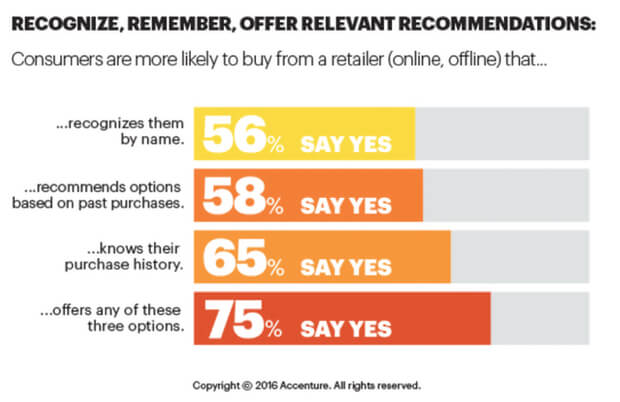
You can do this in OptinMonster with our Smart Tags feature. That lets you take the information you already have from your email marketing, like the visitor’s name, and use it as part of a personalized campaign that appears when they visit your site.
And, of course, you’re not limited to the name. You can also vary onsite campaigns based on the products people have already viewed, as the example below shows:
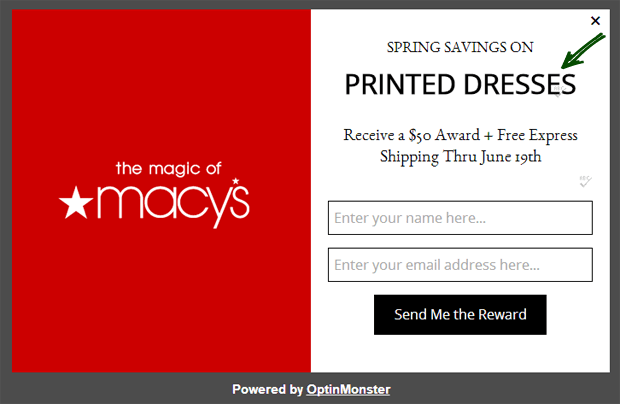
Here’s how you implement Smart Tags with OptinMonster.
6. Get the Language Right
Language is an important part of all successful marketing, as we’ve seen before in our article on conversion-boosting power words. But it’s even more important to persuade your customers when you’re aiming for the upsell.
Some of the best upselling examples get this right by making visitors imagine how they could make use of the upgrade, or by triggering the fear of missing out (FOMO). This is psychologically proven to help make more sales.
For example, this page comparing Spotify plans shows everything you’d be missing if you took the free plan.
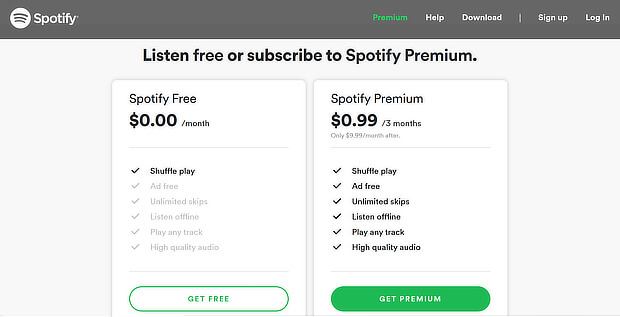
7. Use Urgency
As we’ve seen before using urgency can help increase the value of the upsell.
If your upsell is available for a limited time only, or there are limited quantities, you’ll want to highlight this in your marketing.
One way to do that is by using OptinMonster to create a sale timer for your website. Here’s how you do this:
Login to the OptinMonster dashboard and create a new campaign.

Choose a campaign type. We’ll use the Floating Bar, which sits neatly at the top or bottom of the screen.
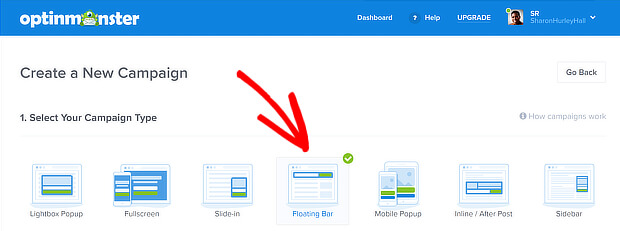
Choose a theme. We’ll use the Countdown Timer.

Name your campaign and press Start Building.
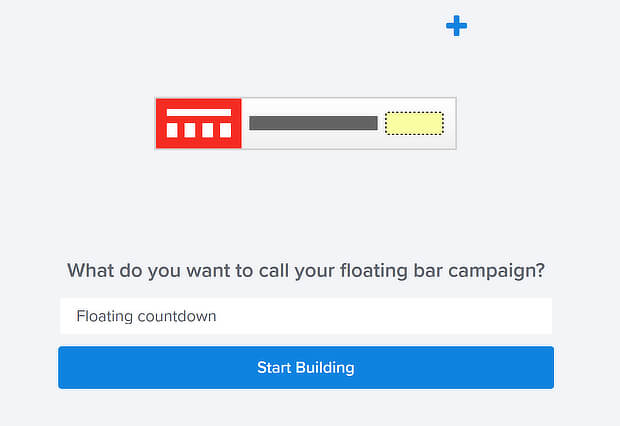
In the Optin tab, go to Countdown Type, and select Static. This will show the same countdown for all visitors.
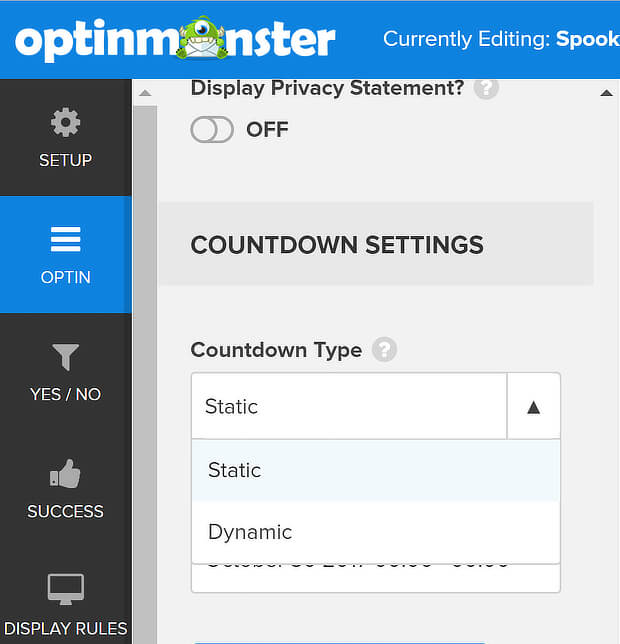
In the Countdown End Date/Time, put the date and time when you want your upsell offer to end.

Click Restart Countdown Preview to see what the countdown will look like.
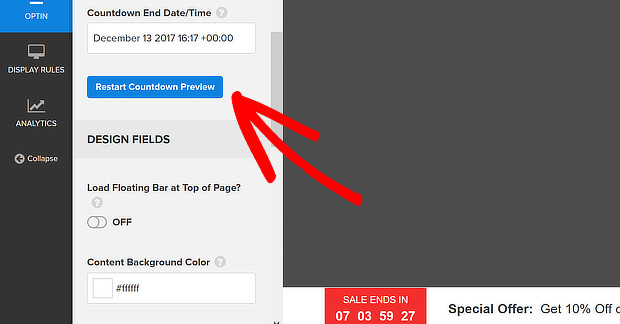
Click on the floating bar text to edit it. Type in the details of your offer.

Set your Display Rules. We’ll use Based on visitor’s date and time. Select Is on or before, and put the end date for your offer. We’ll also use Is on or before to add a start date.
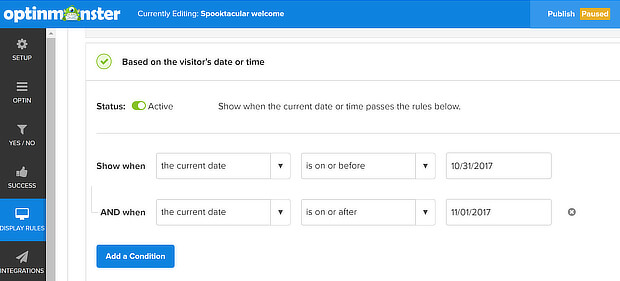
You can also change display rules to show the upsell offer to those on specific pages, such as the page with the product you’re offering the upsell for.
When you’re done, Save and Publish the campaign.

Here’s how you can create a countdown popup using a different template and theme.
8. Offer Free Shipping
Offering free shipping is proven to boost sales. Around 90% of customers say free shipping is their main incentive to shop more online.
So, how does this work with upsells? You can remind people how much more they have to spend to qualify for free shipping. That’s a big incentive to continue adding items to the cart, especially if they’re not too costly. We’ll discuss pricing your upsell later in this guide.
9. Provide Social Proof
Social proof lets people know that others like them found the product or service valuable. It’s something you see on the top online retail sites. For example, Amazon shows you:
- What people bought with the product you are buying
- What people also looked at
- The products they recommend to go with what you’re buying
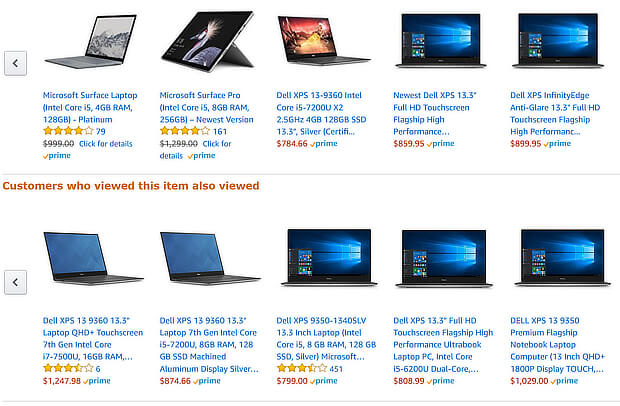
All of these create valuable upsell opportunities.
Add in customer reviews for each item, and you’re priming customers to buy more.
10. Limit the Price Increase
Bitcatcha recommends that you don’t price your upsells too high. After all, it’s supposed to represent a quick win for your customers. They suggest that the price of the upsell shouldn’t be more than 40% more than the item they’re already looking at or buying.
Retail Doctor puts that figure even lower, suggesting that the upsell be no more than an additional 25%. The best advice? Test different options with your own customers till you find what works.
11. Use the Rule of Three
You’ll often hear marketers talk about the “rule of three”. It’s to do with the fact that people respond to patterns, and three seems to be a magic number.
In this case, we’re talking about using the rule of three in pricing. There are multiple studies to show that when there are three price levels, people often go for the middle one. You’ll also hear this called “price anchoring”.
Either way, an upsell can look more attractive if it’s one of at least three options available. See this in action on the MailChimp site.
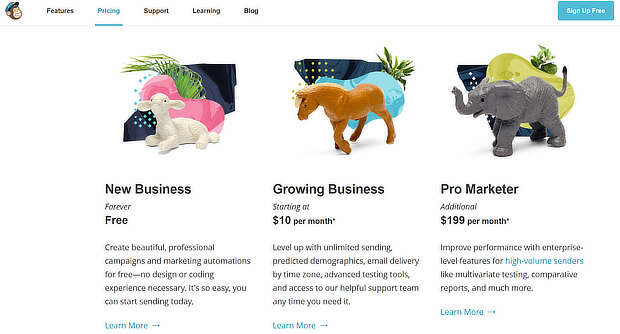
Combine the rule of three with educating your customer about the value of the upsell (as mentioned earlier) and you’re primed to get an increase in AOV.
12. Offer Substitutes
What if your usual upsell item is out of stock? Don’t let that stop you from offering the upsell. The best upselling examples show that you always have an alternative.
For example, if your upsell for a particular phone is upgrading the memory from 64GB to 128GB, and you’re out of the upgrade, suggest 128GB phones in different models from the same manufacturer.
Or, you could simply suggest a phone with similar features where your upsell IS available.
13. Upsell After the Purchase
While many upsells are offered on product or pricing pages, these aren’t the only places to show off your upsell offer. In fact, you can offer an upsell even after customers have completed their purchase.
For example, when placing an order with Mixbook, you get a limited time to edit or upgrade your order before it ships.
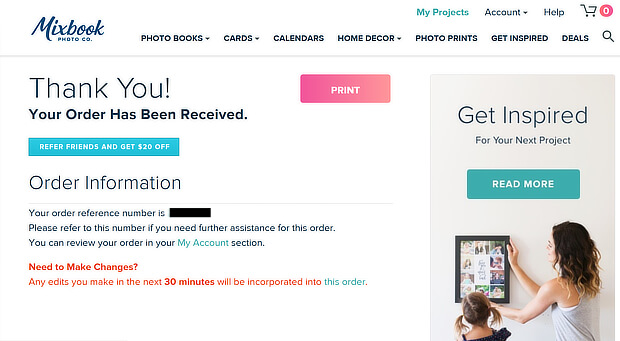
And on sales pages, you’ll often see a deal for a limited time product that complements what you’re already buying.
14. Follow Up via Email
While we’re on the topic of post-purchase upsells, don’t forget about email. Email marketing is still one of the most effective ways to reach your customers, and there are a few upselling email examples that can help you make more sales.
For example, even if people don’t take the upsell when they purchase, you can still offer it again by email. And you can sweeten the deal by offering an additional discount on the upgraded product or service.
In the example below from Digital Marketer, the company offers two free gifts when you take the upsell.
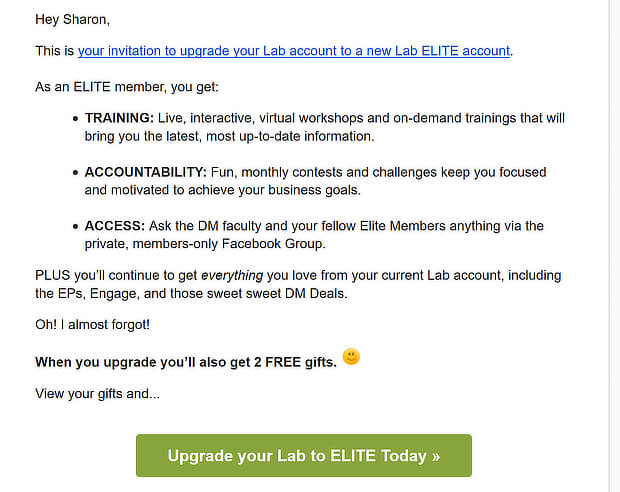
You can also use email to offer upsells as part of your shopping cart abandonment emails. The average shopping cart abandonment rate, according to the Baymard Institute, is 69%. That’s a lot of money to leave on the table.
To target abandonment on the site, use OptinMonster’s Exit-Intent® Technology, and follow up with targeted abandonment emails.
15. Consider Downselling
Finally, if upselling isn’t doing the trick, consider downselling – offering a product that’s slightly reduced in price and features as a way to get your customer to become a customer.
Consider downselling if your customer:
- Only looks at items in a particular price range, using the sorting features on your site
- Has added an item to the cart, but returns to your site to look for cheaper versions
- Has abandoned an upsell in the cart and does not respond to abandonment emails
Downselling can help to build trust by offering options that suit your customers’ pocket and showing that you’re responsive to their needs. Examples include:
- Offering a more cost-effective version of a computer, like one with a less expensive power chip
- Creating a self-study version of a course that’s less expensive than the one with your personal input
- Popping up a coupon to give a discount when it looks like visitors are about to leave the page
This last one is easy to do with OptinMonster. Follow the steps create a popup coupon, and use page level targeting to display it on certain product pages. Then go to Display Rules » When should the campaign appear? and enable On Exit Intent® to make sure it displays before they leave the page.
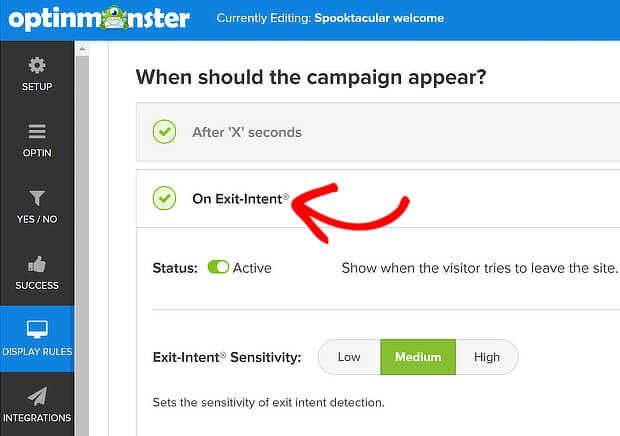
The great thing about downsells is that once visitors become customers, you’ll have other opportunities for upsells later.
Upselling Examples for Inspiration
Want a few more examples of upselling in action? Check these out.
Grammarly has a neat button inviting logged in users to upgrade to premium, along with a page showing the benefits of upgrading. Note that it also has three package options, as we mentioned in tip #11.
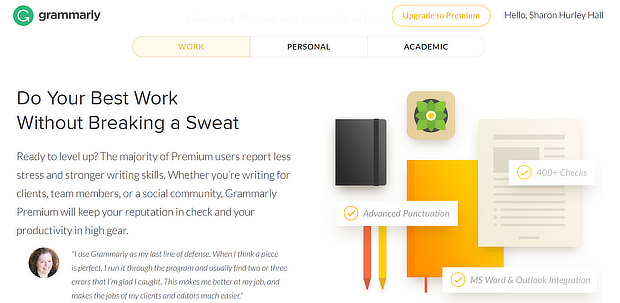
Williams-Sonoma offers a discount for new customers, which encourages them to buy more.
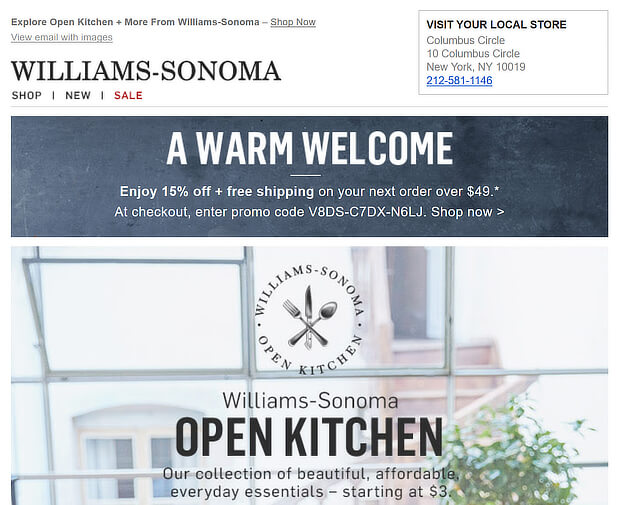
AppSumo’s email shows existing customers the benefit of getting multiple deals in one by moving from a pay per deal to a monthly all in one model.

Dropbox uses an in-app banner to encourage the upgrade to the Business version.

Clicking on the button gives you the USP of the upgrade.

Amazon’s messaging includes letting you know when there’s a newer model or version of the item you’re looking at.
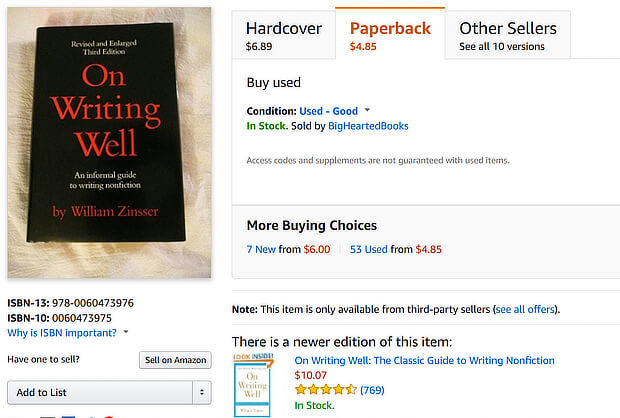
That’s it! With these upselling tips and examples, you’re primed to get the most from your upsell strategy.
If you enjoyed this post, you may also want to check out our tutorial on how to create a product recommendation popup the easy way.
Next, check out our tips on eCommerce email marketing and best practices for marketing automation. And follow us on Twitter and Facebook for more in-depth guides.
FAQs
What is the difference between upselling and cross-selling?
Upselling encourages the customer to choose a higher-value version of the product they’re already considering, such as a larger size, premium tier, or upgraded plan. Cross-selling, on the other hand, suggests complementary items that go along with the original purchase, like a phone case or charger.
What are the best upsell examples in eCommerce?
Some of the most effective upsells include premium or larger versions of a product, extended warranties, paid customization options, subscriptions or longer billing cycles for a discount, and value bundles that feature a higher-tier item.
How do you upsell without being pushy?
Keep your upsell relevant to what the shopper is already viewing, time it after intent signals like adding to cart, clearly show the benefits, keep the price jump reasonable (around 25–40%), add social proof, and always provide a visible “No thanks” option.
Is upselling ethical?
Yes—when it puts the customer first. Ethical upselling is transparent about pricing, avoids hidden fees or dark patterns, and ensures the upgrade genuinely helps the buyer. The key is to give customers clear choices and make opting out easy.










Add a Comment